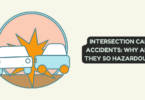
Digital Signage
Digital signage, simply put, is using digital displays like LED, LCD, and projection to show information, ads, or other content. It’s seen in public places like stores, airports, and hospitals, and it stands out because it grabs your attention better than old-fashioned print media.
Why Digital Signage Matters
Digital signage is a game-changer in modern communication. It’s not just about sharing information; it’s a dynamic and eye-catching way to communicate. You can control it remotely and change the content in real-time. Think of it like a superpower for businesses in places like stores or hospitals – it makes customers happier, influences how they behave, and even makes them buy things they didn’t plan on buying.
What Makes Digital Signage Special
Imagine walking into a store, and instead of boring signs, you see cool graphics, animations, and interactive stuff. That’s digital signage. It’s not just a sign; it’s like a cool friend making your shopping experience better.
The Latest in Digital Signage
Digital signage is getting even cooler with new technologies. Things like facial recognition and machine learning give customers personalized experiences. Interactive signs let businesses know what you like, and cloud-based management means signs can be updated in real time. Augmented Reality (AR) is turning signs into interactive displays. All these trends are changing how we see and interact with digital signs.
The Building Blocks of Digital Signage
Digital signage has a few key parts that work together:
Hardware: The physical stuff like LED screens, media players, and servers that make digital signs work.
Software: This is the brain behind digital signage. It helps create, organize, and schedule content. It’s what lets you control what shows up on the screens.
Content: The heart of digital signage. It’s the pictures, videos, and words that get your message across.
Connectivity: This is what keeps everything running smoothly. It makes sure the signs get updated and work together as a team.
These parts need to work together to make sure the digital signs do their job well.
Tips for Making Digital Signs Awesome
Visual Design Tricks: Follow simple design rules like balance, contrast, and emphasis to make signs look good and grab attention.
Colors, Fonts, and Movement: Choose colours and fonts that match your brand. Add movement through animation or video to make things more interesting.
High-Quality Stuff: Invest in good pictures and videos. They make a big difference in how people see and remember your message.
Smart Content Strategy: Plan what you’ll show on your signs. Make sure it fits with what your business wants and what your customers like. Keep updating based on what works.
Schedule and Manage: Plan when and where your content shows up. Keep things fresh by changing stuff regularly. Use tools to make managing all this easier.
Measure Success: Check how well your signs are doing. See if people are looking and if it’s helping your business. Use fancy tools to get even more details.
By using these simple tips, businesses can create digital signs that people notice, understand, and enjoy. It’s not just about flashy screens; it’s about using them in smart ways to make business better.






